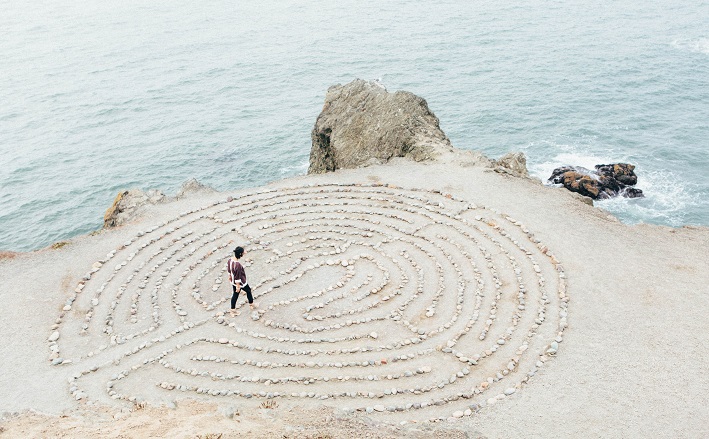People in ministry have a particular challenge in our prayer lives. Prayer can become largely instrumental, lots of asking for help and very little resting in God’s love. The pandemic has reinforced this:
“God, help me with the technology for worship. Help me find a replacement for Sarah, our website magician, whose father, Ben, is ill with COVID. Please heal Ben and give Sarah strength.”
Preachers face an additional challenge. Much of our engagement with the Bible is functional. Instead of marveling at the emotions in a psalm, and bringing our own similar emotions to God, we are busy analyzing the psalm’s structure.
Instead of praying the Apostle Paul’s prayers with him, we list the topics he covers, and we strive to help parishioners pray for those topics. We often do very little of what the psalmist describes: “I have calmed and quieted my soul, like a weaned child with its mother; my soul is like the weaned child that is with me” (Psalm 131:2, NRSV).
Maybe one of the ideas below will bring you a renewed sense of connection with God. Maybe you’ll try something new, and it really doesn’t work. The Psalms affirm that all prayer is good, so we can try new forms of prayer with lightness and a spirit of experimentation.
Allow nature to call you to prayer
Psalm 19 tells us that we learn about God from both nature and God’s word. Because preachers spend so much time in the Bible (often called “special revelation”), we need the balance of time in nature (one aspect of “general revelation”).
Nature has been an enormous lifeline for me in the pandemic, as it has been for so many others. Many of my friends pray while walking. Because of joint pain, I don’t walk easily, but the beauty of nature speaks to me of God as I look out the window, sit on benches in parks and gardens, take photos of flowers and trees inside and outside, and as I collect nature photos.
Nature calls us to praise God, the Creator of everything we see. Nature reminds us to thank God for provision of food through the abundance of the earth’s fruits, plants and animals. The strength and height of hills speak of God’s strength (Psalm 95:4). Trees model for us the stability and trust that comes from keeping our roots in the right place and relying on God for water, minerals in the soil, and sun (Psalm 1:3).
Resources:
- Psalms 1, 19, and 104
- Thirst, a book of poetry by Mary Oliver
Engage your body
I read somewhere that no one can feel depressed while standing with hands raised straight up, so I’ve added that position to my arsenal of prayer helps. How fascinating that people used to pray in that position in the ancient world (1 Timothy 1:8). The Bible mentions other bodily positions for prayer, including kneeling (Psalm 95:6) and laying flat on the ground (Revelation 1:17). Experimenting with new prayer positions can bring freshness.
I often use the sign of the cross while praying, and I leave my hand over my heart afterwards, and I say the words, “I belong to you, Lord Jesus Christ, heart, soul, mind, strength, body, and spirit.”
Numerous churches offer outdoor labyrinths. The slow walking on a labyrinth path focuses our prayers, and anyone can find a place to walk slowly and pray. Slowing our breath, while naming a person we are concerned about with each breath, helps us bring our whole selves into God’s presence. Memorizing scripture while walking, or praying psalms or other scripture passages we already know, includes our bodies, nature, and the Bible in our prayers.
Resources:
- Holy Walks: Learning and Praying the Psalms by Stephen C. Simon
- The Sacred Way: Spiritual Practices for Everyday Life by Tony Jones
Pray with art
A few years ago my husband was preparing to lead an Easter retreat with international students. They planned to study the road to Emmaus story (Luke 24:13-35). I went online to Google Images and looked for images of that story. They ranged from a Rembrandt painting to a contemporary painting of people in dreadlocks sitting with Jesus, with confetti flying overhead. We printed a variety of images, and my husband laid them out on tables after the Bible study. The students lingered for many minutes with each image.
Paintings of biblical stories can clearly be of help to preachers who want to pray through a passage. Other kinds of art can also help us draw near to God. Linger over the piece of art, whether you are looking at the original or on a screen. Pay attention to details. Ask yourself how God is calling you to pray with this artistic expression—perhaps lament, praise, thanks, or intercession—and allow prayer to well up.
Resource:
- Praying With The Arts: Illuminating the Church Year with Sacred Art, a prayer companion for individuals and groups by M. Louise Holert
Gratitude journal
You might also want to experiment with writing a daily list of things you’re thankful for, writing out or drawing prayers in a journal, finding a new prayer partner, making prayer a bigger part of church meetings, or something else. The options are varied. “Let us draw near with confidence to the throne of grace, so that we may receive mercy and find grace to help in time of need” (Hebrews 4:16, NASB).

